![]() OBJECT & SUBJECT
OBJECT & SUBJECT
Achter het banale voorkomen van objecten schuilt een verhaal met een filosofische vraag. Kunnen wij mensen eigenlijk wel objectief kijken? Of is een voorwerp altijd onderworpen aan subjectiviteit, en daarmee dus afhankelijk van de voorkeur en interpretatie van de kijker; Wat is de essentie van een object en hoe is deze te vangen?

Object and Subject
Artists
Curator
- Marissa Karl Karlas
Marketing
- Julia July van Duijn
Fotografie
- Lian Jonkman
On show from 03.11.2022 to 04.11.2022

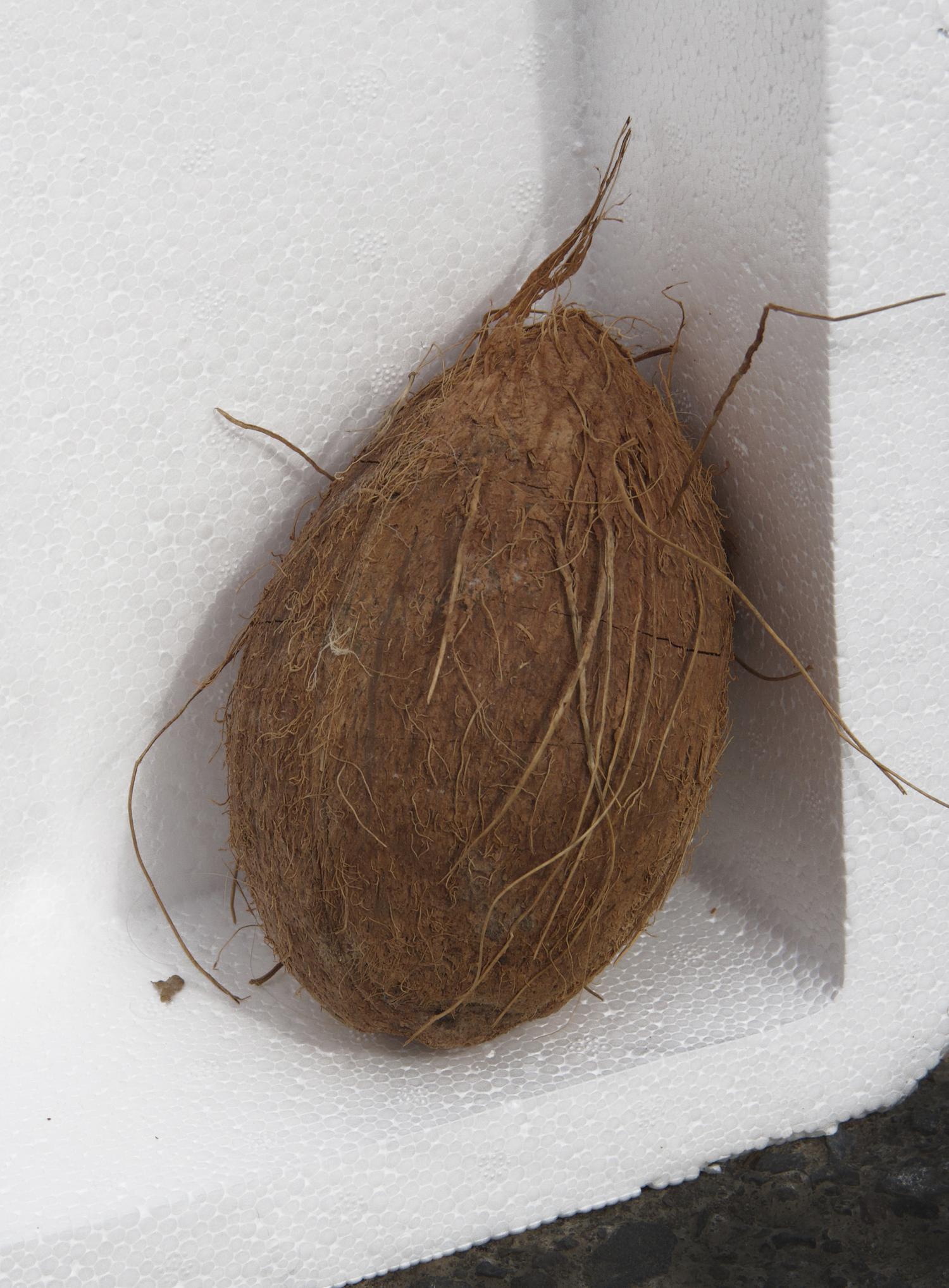

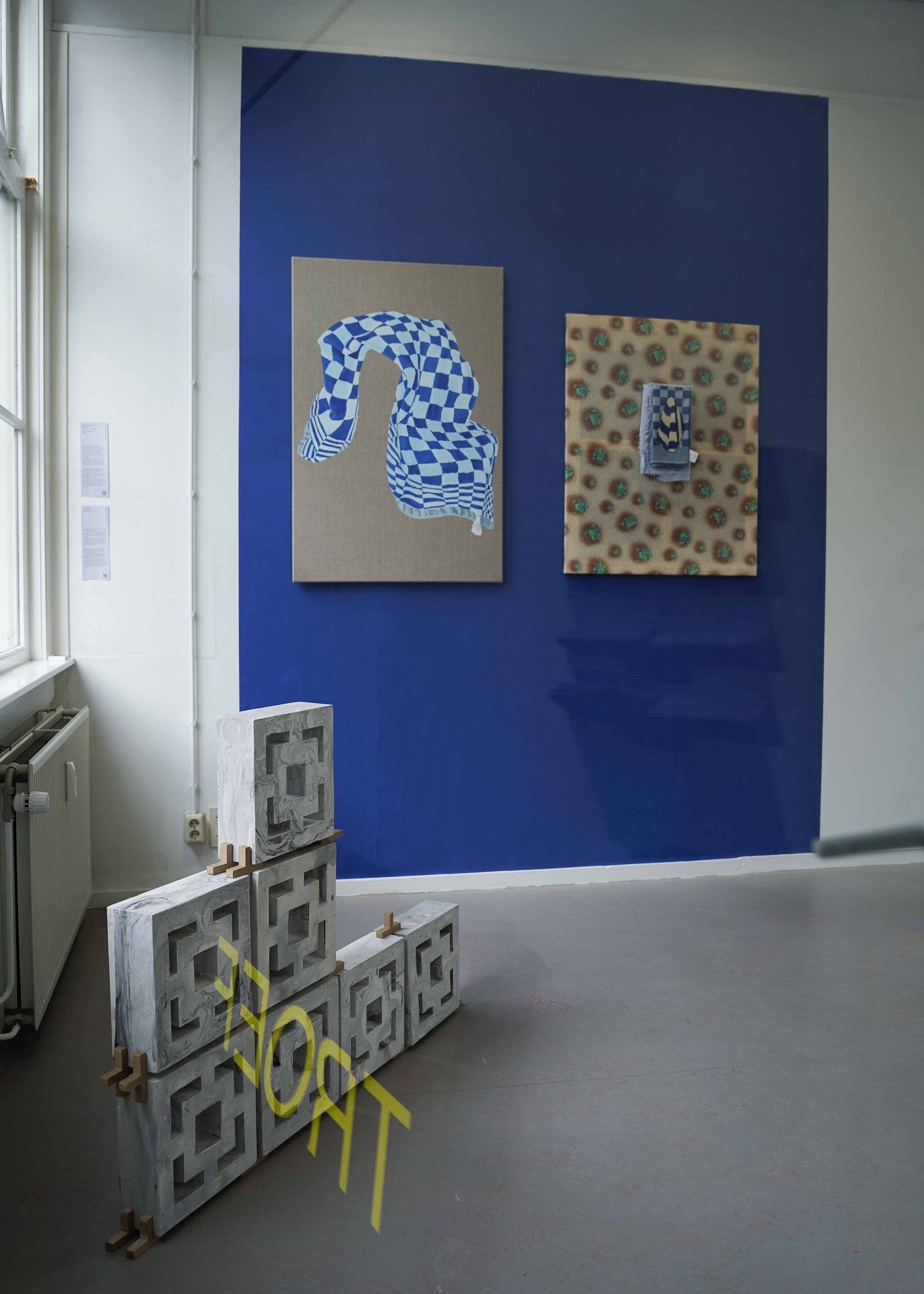
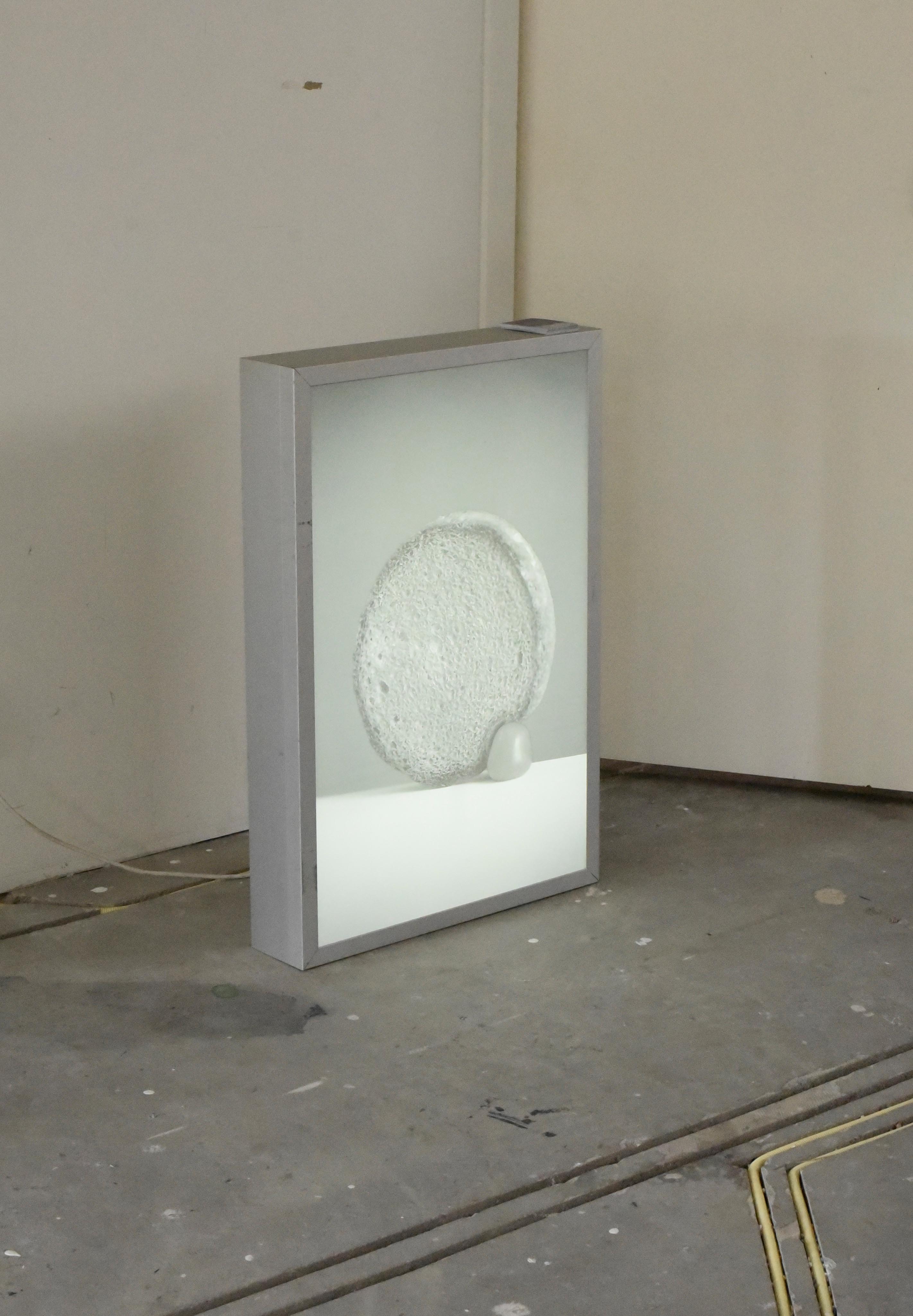
De voorwerpen om ons heen zijn veranderlijk en vergankelijk, en dat deze daardoor geen voorwerp van kennis kunnen zijn. Het Idee van de cirkel gaat vanzelfsprekend vooraf aan alle afbeeldingen ervan. Het woord ‘idee’ van Plato komt van het griekse woord idea wat ‘gestalte’ of ‘aanblik’ betekent. We noemen dat nu ‘kern’ of ‘essentie’.


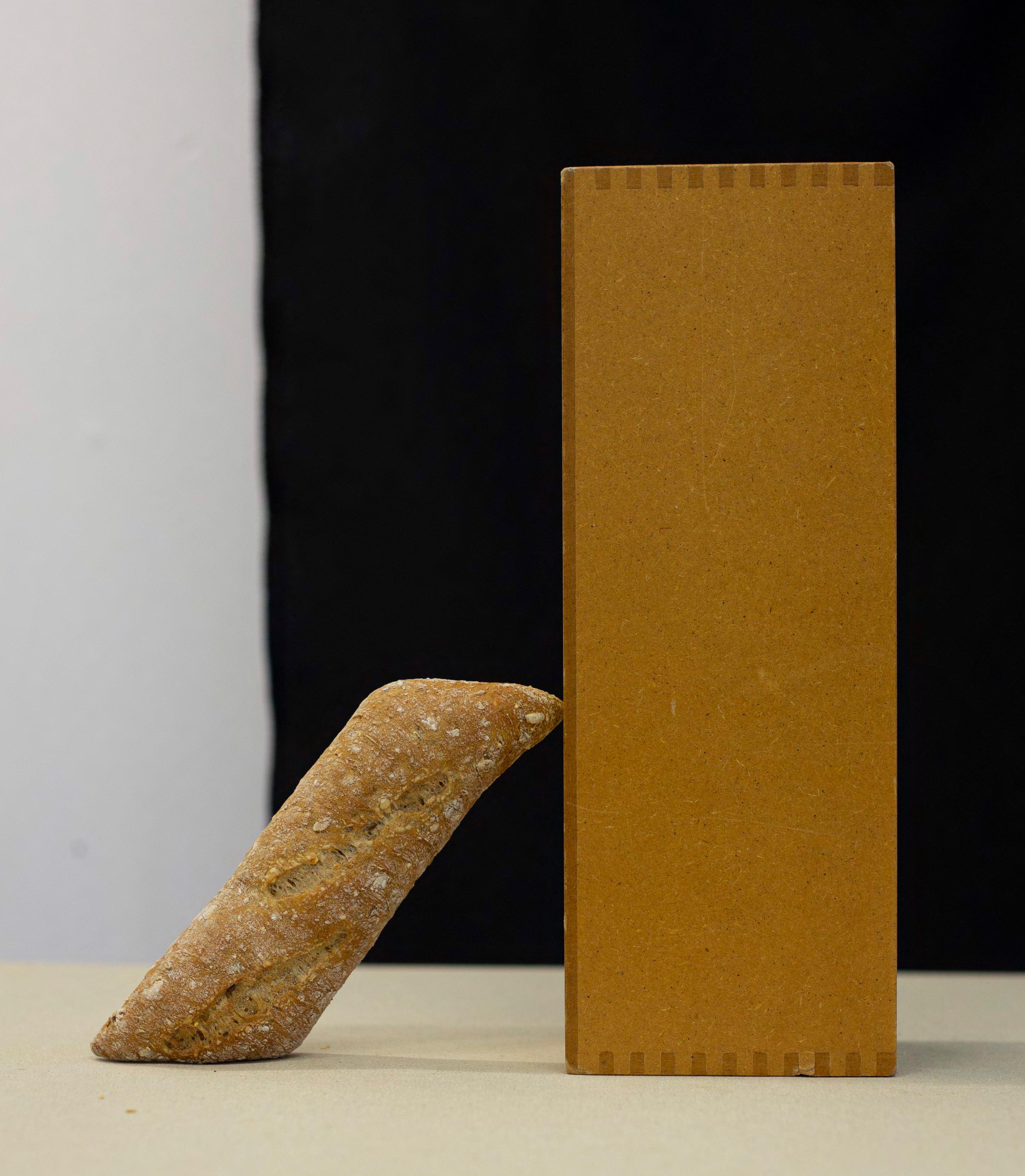

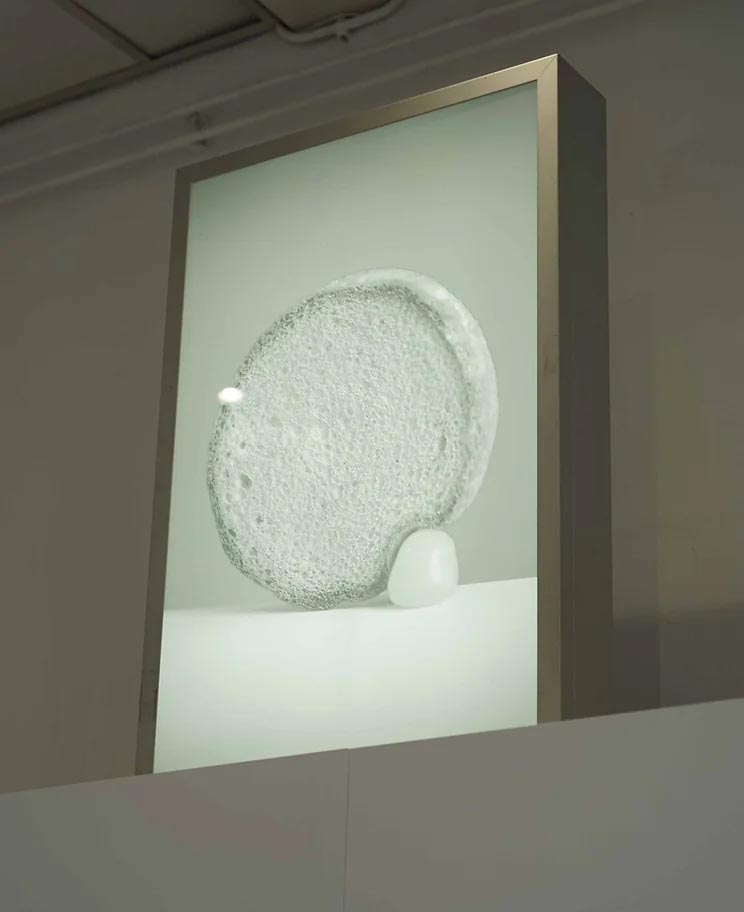
Eva Burema (1996) is a graphic designer and visual artist/researcher based in Amsterdam (NL). Her practice is currently manifested in studies of image and shape. This mainly results in photographs, associative assemblages, book- and communication design, and topics such as consumer culture, commerce, and food. By emphasizing the aesthetic dimensions of her subjects she questions the shape of artificially produced products.
Don’t Spoil My Appetite is an image based research on the appearance of modern-day processed food. This work displays visual suggestions that hint at the aesthetic similarities of supposedly edible and non-edible artifacts. What does it mean that the aesthetic boundary between food and object is becoming increasingly blurred? What can the appearance of artificially produced food tell us about how we relate to what we eat? And to other-than-human beings?
Food/Non-Food #1
Food/Non-Food #4
Food/Non-Food #6
This selection of photographs partially form the follow-up to Don’t Spoil My Appetite. By turning the collage-like principals from the publication into real-life sets, she continues to question the aesthetic relation between edible and non-edible artifacts through photography.
Don’t Spoil My Appetite scan No. 1
Don’t Spoil My Appetite scan No. 2
Both are pages from Don’t Spoil My Appetite (book).
Don’t Spoil My Appetite is an image based research on the appearance of modern-day processed food. This work displays visual suggestions that hint at the aesthetic similarities of supposedly edible and non-edible artifacts. What does it mean that the aesthetic boundary between food and object is becoming increasingly blurred? What can the appearance of artificially produced food tell us about how we relate to what we eat? And to other-than-human beings?
This growing archive of images of artificial objects and food products is co-created with help of Google Image Search. As a response to the uploaded images of food, Google mostly presented images in which no food was depicted, but rather a manufactured object.
Food/Non-Food #1
Food/Non-Food #4
Food/Non-Food #6
This selection of photographs partially form the follow-up to Don’t Spoil My Appetite. By turning the collage-like principals from the publication into real-life sets, she continues to question the aesthetic relation between edible and non-edible artifacts through photography.
Don’t Spoil My Appetite scan No. 1
Don’t Spoil My Appetite scan No. 2
Both are pages from Don’t Spoil My Appetite (book).
De werken beslaan de ruimte tussen de essentie van een object en het zintuiglijk waarneembare.


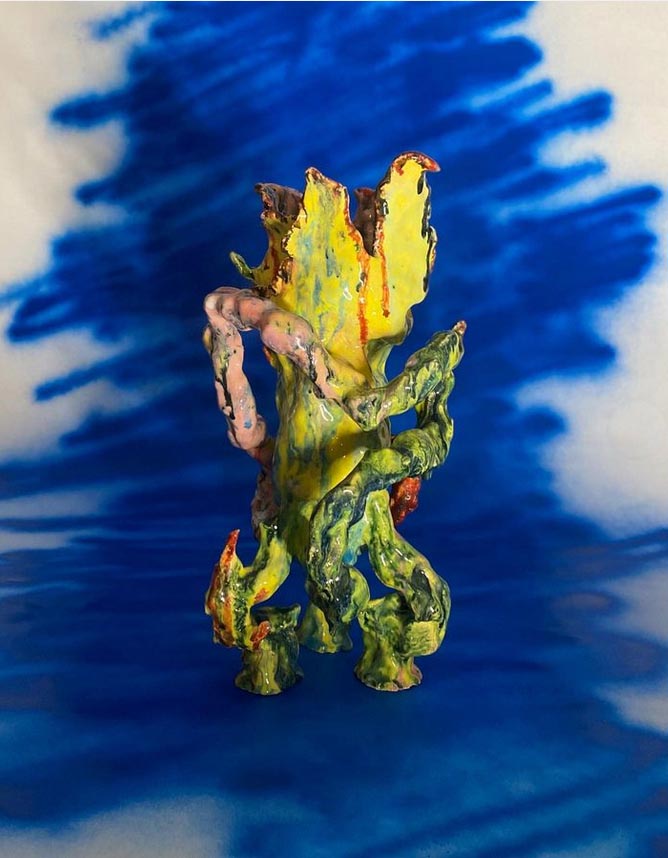

Alex Zamora (1986) — Souvenirs of a Life You Never Lived
Graduated from the Design Lab department at the Gerrit Rietveld Academie. Alex Zamora— artist name is Alex Zeta — is an artist, maker and designer whose work can be framed halfway between product design, art and stage decoration.
He makes and designs functional objects, handcrafted, experimenting with materials and shapes and exploring the relationship of objects in space and their coexistence in our daily lives. Since 2020 he has been developing a practice with ceramics where he reveals art as a commodity, and relates issues such as precariousness and shortage, creating everyday objects that represent the idea of home.
“There were always things that we didn’t have at home. I once satisfied this lack with patterns of compilation and collection. Today I am inspired by the limitation of “not having” in the past. I produce everyday objects that represent a feeling of home. By selling my surplus, I go back to the origins of the concept of trade. The production of commodities is a strategy for survival as well as a tool for learning. Every object I make improves the next. I let my pieces go because they deserve to witness all kinds of landscape.”
Graduated from the Design Lab department at the Gerrit Rietveld Academie. Alex Zamora— artist name is Alex Zeta — is an artist, maker and designer whose work can be framed halfway between product design, art and stage decoration.
He makes and designs functional objects, handcrafted, experimenting with materials and shapes and exploring the relationship of objects in space and their coexistence in our daily lives. Since 2020 he has been developing a practice with ceramics where he reveals art as a commodity, and relates issues such as precariousness and shortage, creating everyday objects that represent the idea of home.
Volgens Aristoteles bestaan de Ideeën zoals Plato ze bedoelde niet; hij stelt dat alles wat de mens denkt gebaseerd is op de waarneming. Hij sprak wel over de ‘essentie’ van een voorwerp. Volgens hem waren alle voorwerpen samengesteld uit materie en vorm, waarbij de vorm het bepalende element is.



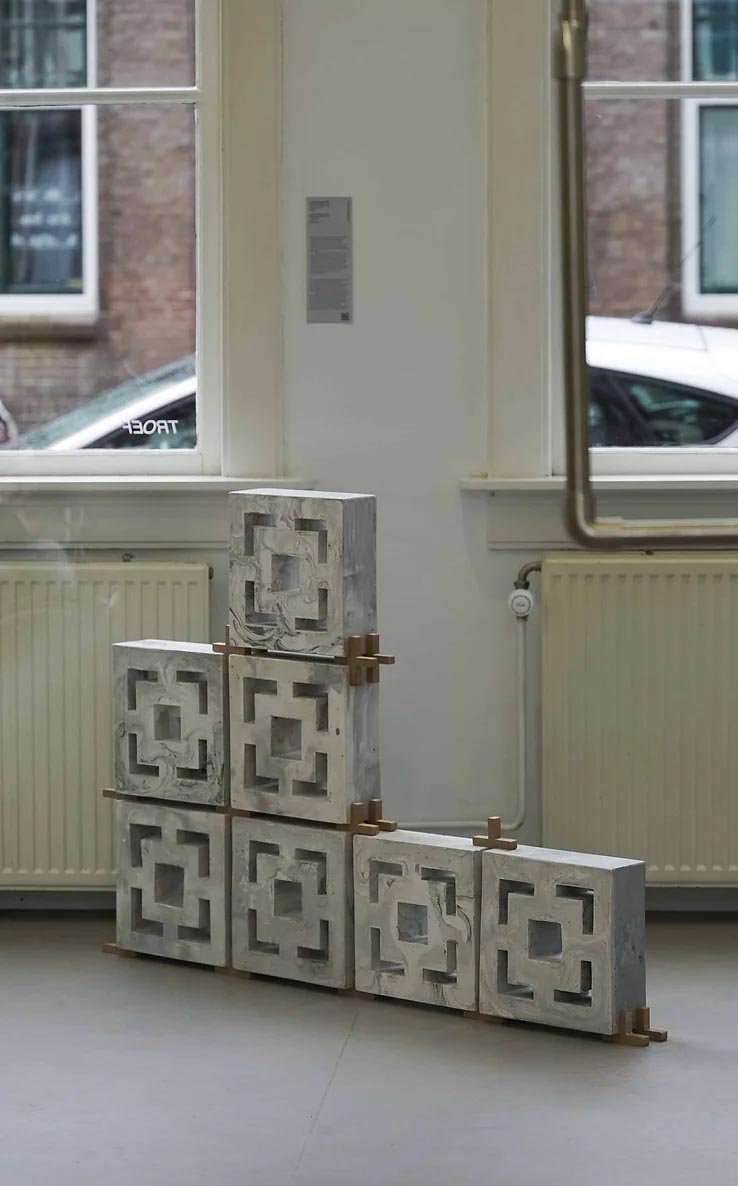
Soft Corners of Concrete Marble Possibilities — Emma van Noort (1990) is a series of works that refer to architectural anecdotes. Emma deliberately and sometimes subconsciously borrowed their visual appearance from repeating moments in her day. Walking from the station to the studio, from the studio to the workshops and from the workshops home. Her home, which was under construction, influenced her sculptural language and interest in standardized infrastructures that manipulate our movement in the domestic space and urban context. Functional creative decisions create a framework resulting in detachable, modular and multifunctional objects. When she displays, she looks for characters in the objects or materials and displaces them to form a new contextual collaboration.
“Functionality, as unpopular as it might be in an artistic context, is a given that I like to play with. I´m experimenting with how ´Form Follows Function´ in the context of transport, materiality and human proportions. I translate this in my installations resulting in detachable and modular sculptures. My current research focuses on standardisation in our daily lives. For this, I mainly look into the domestic space and use the recent renovation of my own house as a test case in which I came across sometimes frustrating or ridiculous situations. I explore my surrounding through materials as I investigate the movements through space and let materials guide me into their historical context to get a deeper understanding of what the work communicates.”
Er bestaan geen aangeboren ideeën: alles wat de mens denkt is gebaseerd op waarneming.
Wat is of maakt dit voorwerp? Hoe ervaar je dit object? Wat maakt dat je het zo ervaart?
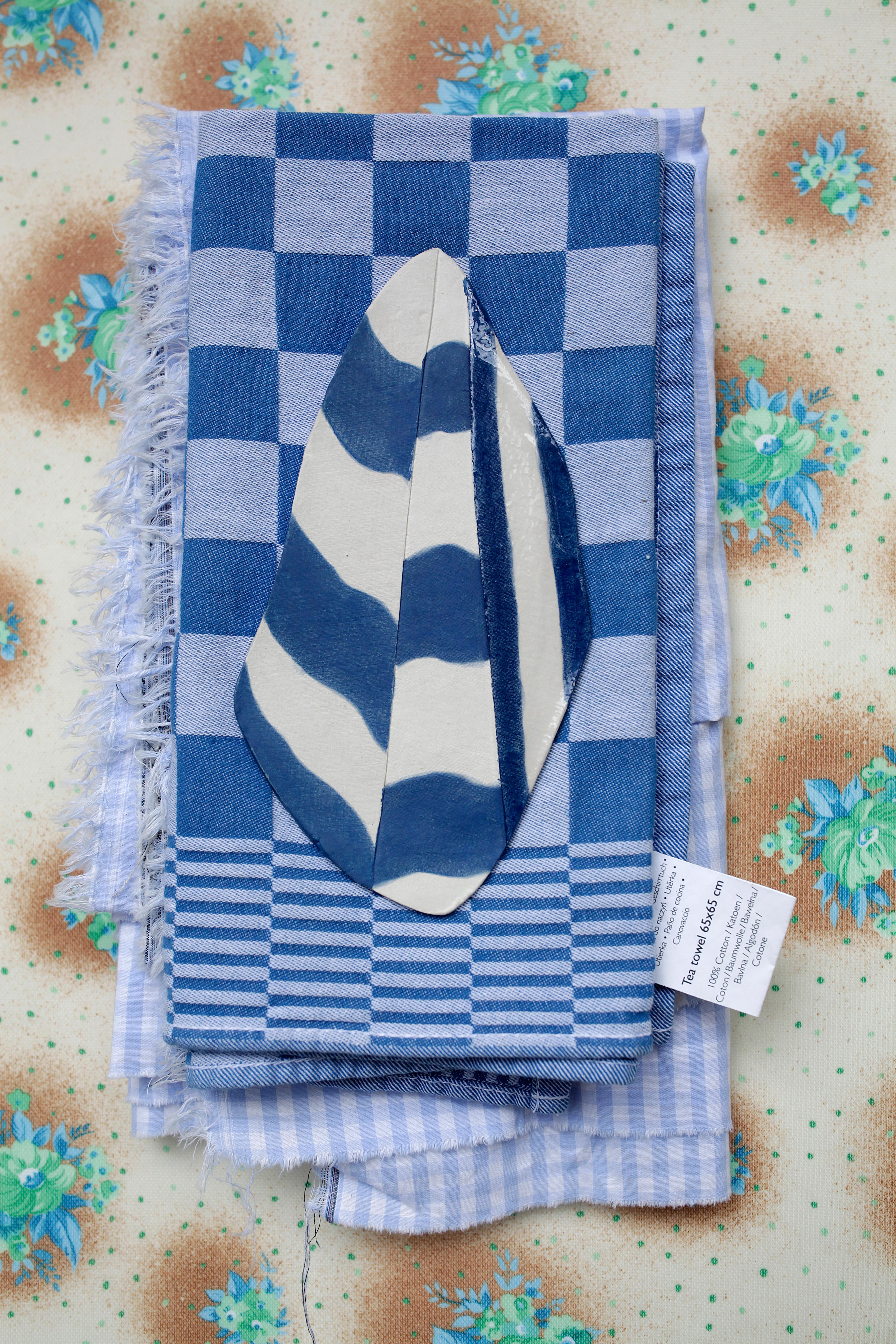
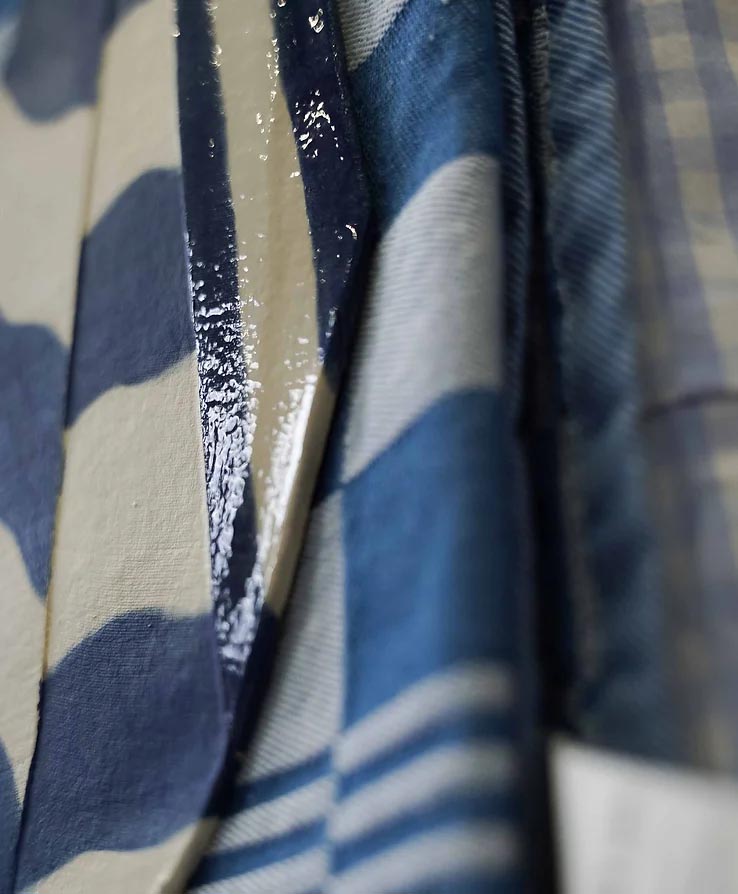
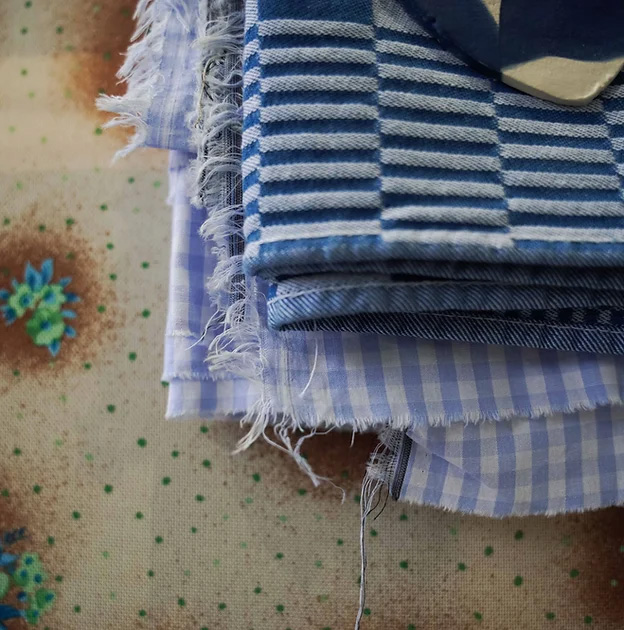

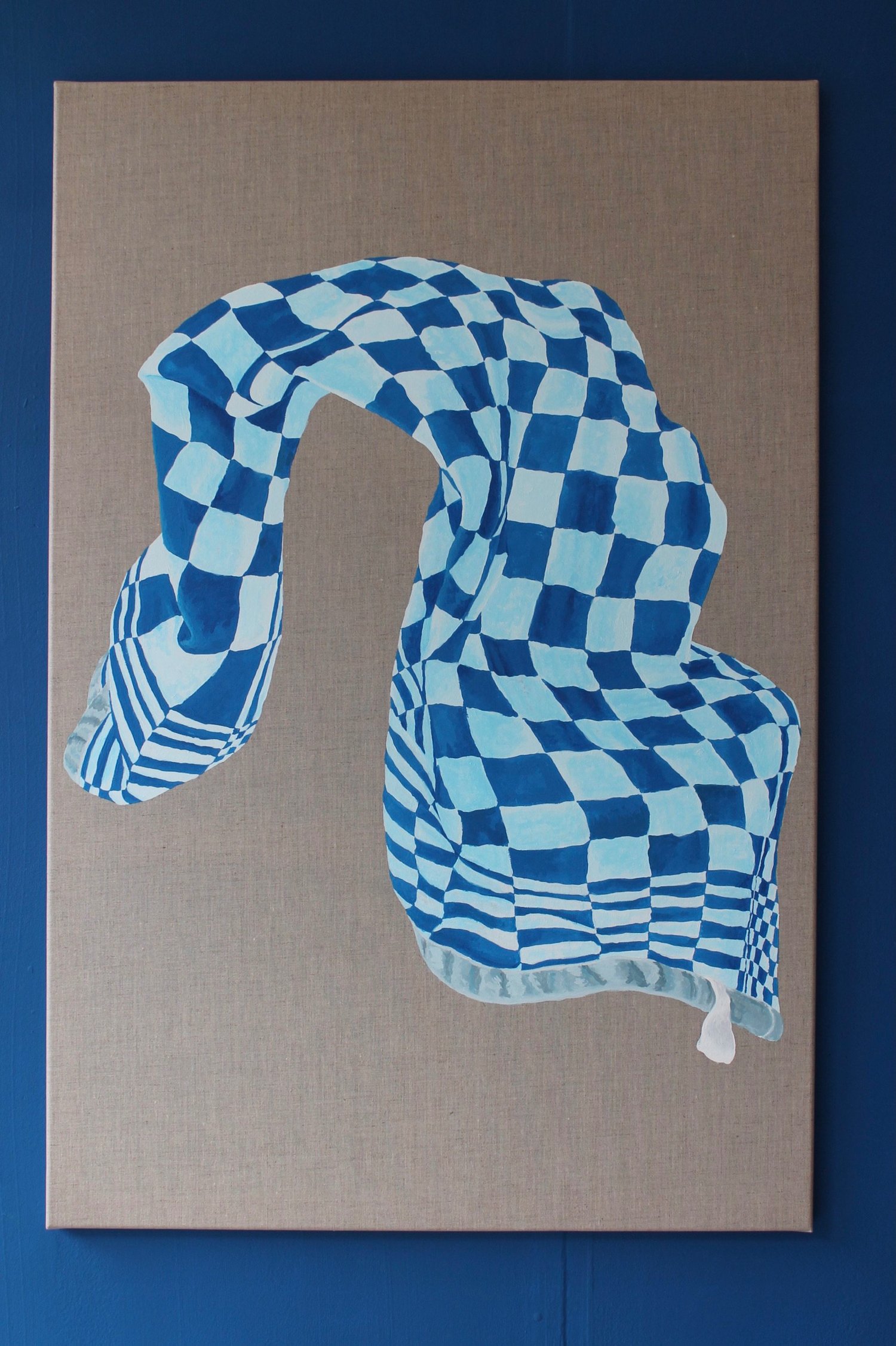
Suzanne Adelmeijer's (1996) works — Painting of a Cloth #3 & Painting of a Cloth #4 play with (distorting) perspective. She believes that what we see is inherent to what we expect to see. Recognizable imagery gives the possibility to question your own assumptions and the way people look at the world around you.
The mystery of it, as well as the longing to know something, makes it very exciting. The tea towel, especially with its recognizable prints, plays a clear role in our lives. This has the consequence that it is covered with meaning and with expectations. The cloth covers something, but this is now merely negative space. Suzanne wanted to give a podium to the cover, rather than to what there is to be discovered. The tea towel being something mundane, part of everyday life, gives the work strength because it raises questions about what people tend to find interesting and what is just “normal”.
Three cloths
For Suzanne, this work is about covering and about the assumptions I have. One of these clothes is not made out of fabric, but out of ceramics. Can something made out of ceramics, be a cloth? The ceramic piece does not fulfil the function of a cloth. But the other two do not, either. The act of covering is often possible because of gravity. This work is not laying down, it is hung vertically. Do these three objects cover each other? And if the fabrics are not fulfilling any function right now, then can the ceramic piece be a cloth, too?
“I find the idea of covering fascinating. To me, it automatically means that there is something to uncover.”
The mystery of it, as well as the longing to know something, makes it very exciting. The tea towel, especially with its recognizable prints, plays a clear role in our lives. This has the consequence that it is covered with meaning and with expectations. The cloth covers something, but this is now merely negative space. Suzanne wanted to give a podium to the cover, rather than to what there is to be discovered. The tea towel being something mundane, part of everyday life, gives the work strength because it raises questions about what people tend to find interesting and what is just “normal”.
Three cloths
For Suzanne, this work is about covering and about the assumptions I have. One of these clothes is not made out of fabric, but out of ceramics. Can something made out of ceramics, be a cloth? The ceramic piece does not fulfil the function of a cloth. But the other two do not, either. The act of covering is often possible because of gravity. This work is not laying down, it is hung vertically. Do these three objects cover each other? And if the fabrics are not fulfilling any function right now, then can the ceramic piece be a cloth, too?